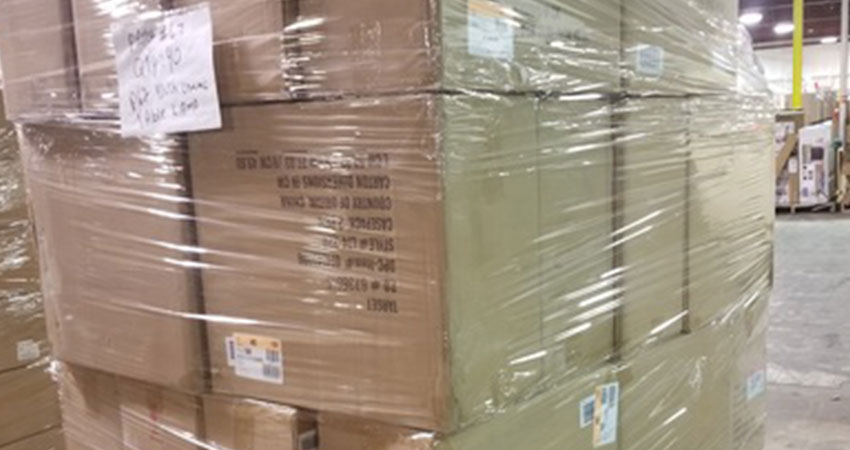Stockouts were disastrous for retailers during the pandemic, up by 250% in 2021, according to Adobe. With 37% of consumers saying they’d simply shop elsewhere if they couldn’t find what they wanted, the general mood was one of impatience.
Rather than benefit from the surge, retailers suffered. According to data from Brightpearl, almost half of retailers (46%) said they experienced stockouts, leading to a loss of sales.
It’s fair to say that most companies who survived these ecommerce waves emerged rattled at best. The lucky ones managed to balance stock levels reactively, replenishing a steady stream of their bestselling products as orders came in, even growing their business. Most, though, took a severe hit to profits. The “bullwhip effect” led to over-purchasing a mass of inventory as safety stock.
From There to Here
When we consider the unpredictability of the last couple of years, overstocks seem a forgivable choice. Worldwide shutdowns made the period where people were stuck indoors, sustained only by a stream of online deliveries, seem like it would never end.
Of course, this level of demand could not be maintained, and in 2022 it has dropped considerably. What no one could have anticipated was the number of coinciding crises that would emerge, sending retailers across the globe into a state of cash flow paralysis.
Among them, a global supply chain crisis, rife with driver shortages and lengthy shipping times. This was buttressed by a lack of resources and skyrocketing costs brought on by the Ukraine war. High rates of inflation and increased cost of living means consumers are buckling down on discretionary purchases and saving their cash for food and gas. Even returns are up, reaching 16.6% in 2021 from 10.6% in 2020, according to the National Retail Federation.
The result? Retailers who understandably erred on the side of overstocks during the pandemic are now stuck with a mountain of goods they can’t shift. With the return on inventory investment slowed, it damages cash flow predictability.
Unsold stock is another revenue drain that kills cash flow; the other side of the overstocks coin. It not only loses firms money, but the cost of stock liquidation delivers a devastating blow to the bottom line that can be lethal for business.
Pundits are predicting that the post-pandemic problem of excess stock could be the final nail in the coffin for retailers. Other reports describe merchants being overstocked by more than 30%, with no space to keep it all.
In the UK, one banking source said the 37 listed businesses that make up the “UK retail plc” have £2.8bn in excess stock, a major concern with inflation at 30-year highs. On this side of the pond, Target said it plans to right-size its inventory by making additional markdowns across the board.
But these reactive, stopgap solutions aren’t viable for all, and are actually making things worse. Six out of ten retailers have increased prices to cover expenses and make up for losses, while 29% are choosing to take the hit to keep prices stable. In either case nobody wins, as either the retailer or the customer gets hit in the pocket.
There’s no way to know when the outlook will change, with so many global factors at play. Experts have predicted supply chain effects could last well into 2023. This means firms will have months of uncertainty to battle with, alongside a warehouse of overstock trapping their cash. They’re stuck in a tug of war between selling what they can and trying to dispose of what they can’t.
It’s clear that this inability to smartly manage stock is a corrosive force on retailers, both in terms of revenue and long-term viability. The crisis is such that 26% of online retailers say they are only six weeks away from going bust if cash flow doesn’t improve, according to Brightpearl data.
Clearing the Mist Over Inventory
These unforeseen circumstances have upped the pressure on retailers, but there are lessons we can learn operationally. The crux of the issue here is a lack of visibility across inventory planning and purchasing, stock control and supply chain.
Without the ability to target these cash flow blockers — overstocks, out of stocks and determining which products are either driving sales or going stale — retailers are struggling to intelligently solve inventory issues. There needs to be a way to laser focus on sources of trapped revenue, smartly preparing for unpredictable demand peaks and valleys and factoring supply chain issues such as extended lead times into purchasing decisions.
So, what’s the solution? One thing’s for certain: it isn’t in spreadsheets. To calculate something as nuanced as forecasting predictions among so many environmental factors would be almost impossible, not to mention time consuming.
The key lies in tools such as inventory planning and demand forecasting software. It can help retailers gain inventory visibility, accurately forecast sales and factor in variables such as supplier costs and lead times. Access to this data leads to better decision-making and more optimized cash flow, essential for survival in a tough recessionary climate.
Manual analysis and guesswork will no longer serve companies in the rapidly shifting ecommerce world. It’ll invariably lead to mountains of excess inventory and many doomed businesses as a result.
Demand forecasting tools help retailers keep a consistent stock of their best-selling items, release their duds, eliminate the risk of overselling and make informed purchasing, marketing, pricing and even staffing decisions. They can then step off the overstocks vs. stockouts seesaw and get back on the ladder towards profitability and growth.
Wrapping Up
Drawing consumers back online will be a hardy task, but the multifaceted disruptions to ecommerce make it vital for retailers to do everything possible to take back control of the service they provide. Their long-term survival may well depend on it.
Jill Liliedahl is Vice President, Revenue for Inventory Planner by Sage

